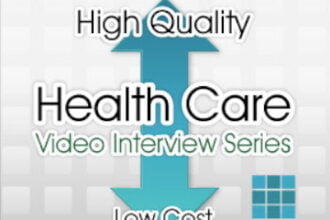Distance medicine technologies can be disruptive in the way physicians and other care givers interact with patients and with each other and can fundamentally change how patients are able to interact with the entire health care system. This is of increasing relevance as medicine gravitates toward chronic illnesses where diagnosis and treatment are complex and require multi-specialist teams. It also has potential to alleviate some of the effects of the growing shortage of professionals.
Distance medicine technologies can be disruptive in the way physicians and other care givers interact with patients and with each other and can fundamentally change how patients are able to interact with the entire health care system. This is of increasing relevance as medicine gravitates toward chronic illnesses where diagnosis and treatment are complex and require multi-specialist teams. It also has potential to alleviate some of the effects of the growing shortage of professionals.
There are certain needs that the health care system in the United States must begin to respond to. Among them are the rising costs of medical care; the challenge to reduce costs; the desire (soon to be a demand) of patients and their families to have greater responsiveness from their health care providers; the rapid emergence to chronic illnesses that are life long and very complex to diagnose and treat; and the current and developing shortage of health care professionals who are in need of time saving and safety enhancement assistance in their daily activities. Distance medicine is one of the key technologies that can indeed address each of these critical medical care needs into the future.
There are many opportunities for the use of distance medicine technologies; here is just a sampler.
First is a need to receive information from others in a way that is flawless, accurate and prompt. Consider this all too true story. A patient saw his primary care physician for a persistent cough at office site #1. He had a CT scan at hospital site #2 which was 45 miles away. He then had a biopsy at site #3. The pathology report of lung cancer was completed at another institution or site #4. He was then sent to visit a thoracic surgeon two hours away at site #5 who sent him for a PET scan, also at site #5. When the surgeon was then not available for a prompt follow-up visit, the patient arranged to go to a major cancer center four hours away at site #6. But for this visit he was told that he needed to bring all of the information from the previous five sites of care. He had to visit each again and obtain the files. As such he was thus required to serve as his own “Federal Express.” But this should not have been necessary since all of the data from his scans and pathology were already in a digital form and could potentially have been sent, with appropriate security, over the internet with commercially available technology which is available today. The issue of course is to have this happen today using today’s technology. Hospitals especially and imaging centers (and caregivers to a somewhat lesser degree) frankly should not be able to avoid this any longer.
The second is the need to transmit information about a patient and the patient’s condition so that it can be monitored and acted upon from a distance. For example, many ICU’s do not have the advantage of a full time pulmonologist or intensivist available 24/7 but patient care issues come up any time of day or weekend. VISICU, and similar technologies, allows an ICU specialist physician at a distant site to observe in real time multiple patients in multiple ICUs. The physician can observe physiologic parameters, review laboratory data in addition to seeing and talking to the patient via tele-technology, examining the patient via electronic stethoscope, etc and interacting with the nursing or resident staff. The result is better medicine with fewer errors, shorter hospital stays and improved patient and staff satisfaction. VISICU is commercially available.
Third is a need to submit prescriptions to a local or hospital pharmacy in electronic form to accomplish at least these three goals: increased efficiency, increased accuracy and improved safety. At the same time it can assist in educating and training by alerting the physician to drug-drug interactions and suggesting specific reasons why one drug versus another might be better, say, for a community acquired pneumonia. The needed technology to accomplish these goals is currently available commercially and frequently utilized in hospitals and increasingly in the out patient setting provided the physician has some form of electronic medical record system.
Forth is a need to obtain patient information that is of critical or urgent importance and transmit it to the care giver(s) for rapid action. For example, home blood glucose monitoring connected to the provider’s office via the internet can alert the physician or nurse that glucose control is less than satisfactory and thus prompt a call to the patient. Or, a home scale connected via the internet to the provider’s office for a patient with heart failure. If the patient’s weight begins to increase, the physician might alter the diuretic dosage and thereby save not only an office visit but even a trip to the ER or a hospital admission. Or, a portable home heart rhythm monitoring for the patient with an unstable cardiac arrhythmia. This is often built into newer pacemakers and all intra-cardiac defibrillators but is infrequently utilized to anywhere near its potential. In a similar manner, a “pacemaker” equivalent can monitor the patient’s internal EKG and reports via wireless technology at the first evidence of a developing infarct, even before the patient feels pain developing.
A fifth need is a methodology to create “distributed patient care,” that is, immediate access to consultative services when time is critical. Imagine this also true story. A surgeon found himself in a difficult situation during emergency nighttime surgery and could not stop the patient’s bleeding. A call goes out to a senior surgical colleague at home some 65 miles away for advice. The at home surgeon listens to the situation over the telephone but cannot truly appreciate the problem via the spoken word – he needs visualization in order to give useful advice. So he drives to the distant hospital to assist where he is now able to visualize the problem and give a useful consultation. Rather than that scenario, a video in the OR light source, the room wall and/ or the laparoscopic instruments could be transmitted to the senior surgeon’s home computer thereby eliminating the need for a lengthy drive and the time related. This will allow for expert consultation at short notice. This scenario could be solved with currently available commercial technology. In the future the senior surgeon could not only advise on next steps in a procedure but assist via telesurgery devices and even demonstrate via telesurgery devices.
My last example is the need for a methodology to create “distributed learning.” Rather than expect every smaller hospital to have its own broad-based continuing educational programs, arrange for expert training and education via telementoring methodologies. It is better to build an excellent central source with expert educators and trainers and distribute their expertise via various telementoring devices including the internet, DVDs, CDs, cell phones, ipods, PCs, etc.
Many aspects of distance medicine are not paid for today given our current reimbursement methodology. But if some medical leaders, by advancing the use of distance medicine techniques, can demonstrate the cost saving opportunities along with the improvements of patient care, patient safety and responsiveness possible, it will encourage the needed financial actions. This will be a disruptive and transformational change that will have a major impact on how medicine is practiced into the future – a medical megatrend in the making.
Stephen C Schimpff, MD is an internist, professor of medicine and public policy, former CEO of the University of Maryland Medical Center and consults for the US Army, medical startups and Fortune 500 companies. He is the author of The Future of Medicine – Megatrends in Healthcare and “The Future of Health Care Delivery- Why It Must Change and How It Will affect You” from which this post was, in part, adapted. Updates are available at http://medicalmegatrends.blogspot.com








